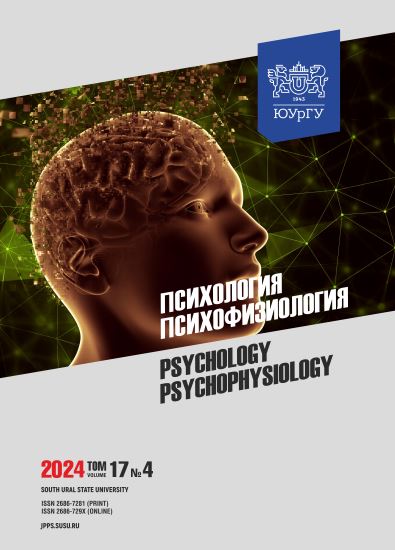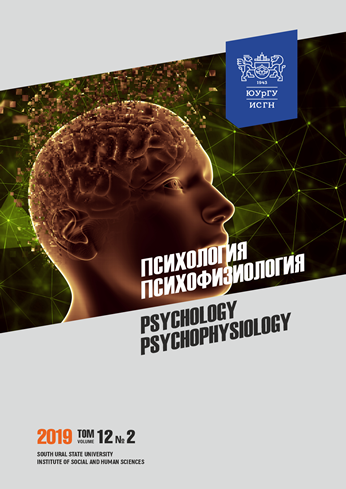Psycho-emotional state of reproductive-age women as a risk factor influencing smoking and alcohol consumption before and during pregnancy
Abstract
Introduction. Mental disorders are the reason for pregnancy-related nicotine and alcohol use, thus making the early diagnosis of psychological distress and traumatic experiences a crucial task. Women at risk of pregnancy-related substance use require timely psychological support. Aim. This study examines the complex relationship between psycho-emotional state and substance use in reproductive-age women before pregnancy and in the prenatal period. Materials and methods. The sample involved 204 pregnant women. The obtained data were analyzed using standardized measures of psychological distress (K-10 and IES-R scales), substance use risk assessment tools (AUDIT-C, ASSIST, and TLFB), and socio-demographic factors. Results. Our findings demonstrate relatively high levels of psychological distress among pregnant women, with 13.7 % reporting smoking and 21.6 % reporting alcohol abuse. A strong correlation was found between distress levels and substance use, particularly among smokers. The number of women with signs of distress who did not consume alcohol increased during the prenatal period. Conclusion. This study highlights the importance of comprehensive prenatal care that integrates psychological support to mitigate risks associated with nicotine and alcohol exposure during pregnancy.
Downloads
References
2. Drapkina O.M., Gomanova L.I., Balanova Yu.A. et al. Prevalence of psychological stress among the Russian population and its association with socio-demographic characteristics. Data from the ESSE-RF3 study. Kardiovaskulyarnaya terapiya i profilaktika = Cardiovascular Therapy and Prevention. 2023;22(8S):3795. (in Russ.). DOI: 10.15829/1728-8800-2023-3795.
3. Vasileva A.V., Karavaeva T.A., Radionov D.S. Post-Traumatic Stress Disorder Psychotherapy – Integrating the Experience of an Emergency. Konsultativnaya psikhologiya i psikhoterapiya = Counseling Psychology and Psychotherapy. 2023;31 (3):47–68. (in Russ.). DOI: 10.17759/cpp.2023310303.
4. Kessler R.C., Aguilar-Gaxiola S., Alonso J. et al. Trauma and PTSD in the WHO World Mental Health Surveys. European Journal of Psychotraumatology. 2017;8(5):1353383–1353383. DOI: 10.1080/20008198.2017.1353383
5. Psikhoterapiya [Psychotherapy]. Eds. A.V. Vasileva, T.A. Karavaeva, N.G. Neznanov. Moscow: GEOTAR-Media. 2022:864. (in Russ.) DOI: 10.33029/9704–6485–4–VKN–2022–1–86
6. Karavaeva T.A., Vasileva A.V., Radionov D.S. Сomorbidity of Post–traumatic stress disorder and psychoactive substance abuse: problems of diagnostics, etiology, pathogenesis, and approaches to psychotherapy. Voprosy narkologii = Journal of Addiction Problems. 2022;9-10(212):75–95. (in Russ.). DOI: 10.47877/0234–0623_2022_9–10_75
7. Balachova T., Zander R., Bonner B. et al. Smoking and alcohol use among women in Russia: Dual risk for prenatal exposure. Journal of Ethnicity in Substance Abuse. 2019;18(2):167–182. DOI: 10.1080/15332640.2017.1328325
8. Camacho R.C., Carpintero N.L., Barrigón M.L. et al. Substance use, mental health and dual disorders on pregnancy: Results of prevalence and treatment rates in a developed country. Adicciones. 2021;34(4):299. DOI: 10.20882/adicciones.1568
9. Sistani F., Rodriguez De Bittner M., Shaya F.T. Social determinants of health, substance use, and drug overdose prevention. Journal of the American Pharmacists Association. 2023;63(2):628–632. DOI: 10.1016/j.japh.2022.10.023
10. Brown Q.L., Shmulewitz D., Sarvet A.L. et al. Cannabis use, cannabis use disorder and mental health disorders among pregnant and postpartum women in the US: A nationally representative study. Drug and Alcohol Dependence. 2023;248:109940. DOI: 10.1016/j.drugalcdep.2023.109940
11. Kessler R.C., Andrews G., Colpe L.J. et al. Short screening scales to monitor population prevalences and trends in non-specific psychological distress. Psychological Medicine. 2002;32;959–956. DOI: 10.1017/S0033291702006074.
12. Horowitz M, Wilner N, Alvarez W. Impact of Event Scale: A Measure of Subjective Stress. Psychosomatic Medicine. 1979;41(3):209.
13. Tarabrina N.V. Psihologiya posttravmaticheskogo stressa [Psychology of Posstraumatic Stress]. Moscow. Institute of Psychology of the Russian Academy of Sciences Publ. 2009:390. (in Russ.).
14. Bradley K.A., DeBenedetti A.F., Volk R.J. AUDIT-C as a brief screen for alcohol misuse in primary care. Alcoholism: Clinical and Experimental Research. 2007;31(7):1208–1217. DOI: 10.1111/j.1530-0277.2007.00403.x
15. Humeniuk R., Henry-Edwards S., Ali R. et al. World Health Organization. The Alcohol, Smoking and Substance involvement Screening Test (ASSIST): manual for use in primary care. URL: https://www.who.int/publications/i/item/978924159938-2 (accessed 15.04.2024).
16. Sobell L.C., Sobell M.B. Timeline follow-back: A technique for assessing self-reported alcohol consumption. In: Measuring Alcohol Consumption: Psychosocial and Biochemical Methods. Humana Press/Springer Nature. 1992:41–72. DOI: 10.1007/978-1-4612-0357-5_3
17. Fadeeva E.V. Comparative assessment of the prevalence of smoking and alcohol consumption by women of reproductive age before and during prenatal pregnancy. Vestnik psihoterapii = Bulletin of Psychotherapy. 2024;91:14–29. (in Russ.). DOI: 10.25016/2782-652X-2024-0-91-14-29
References on translit
-Copyright (c) 2024 Psychology. Psychophysiology

This work is licensed under a Creative Commons Attribution-NonCommercial-NoDerivatives 4.0 International License.



